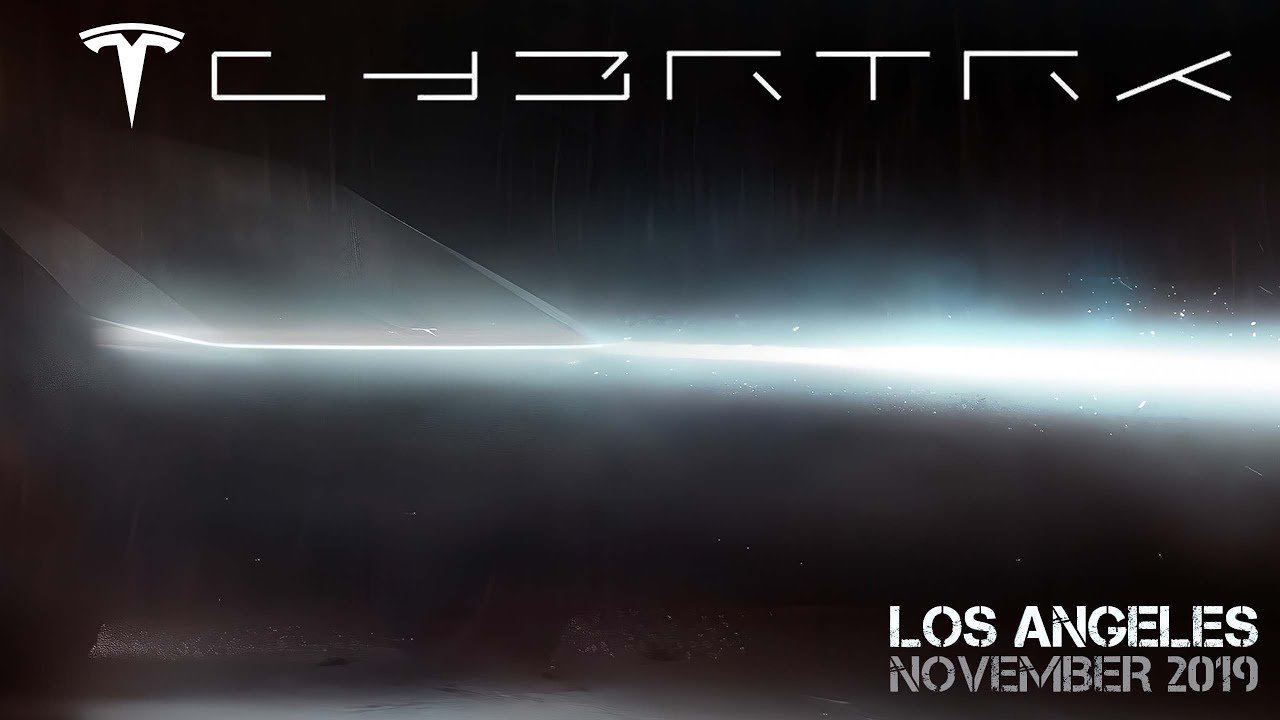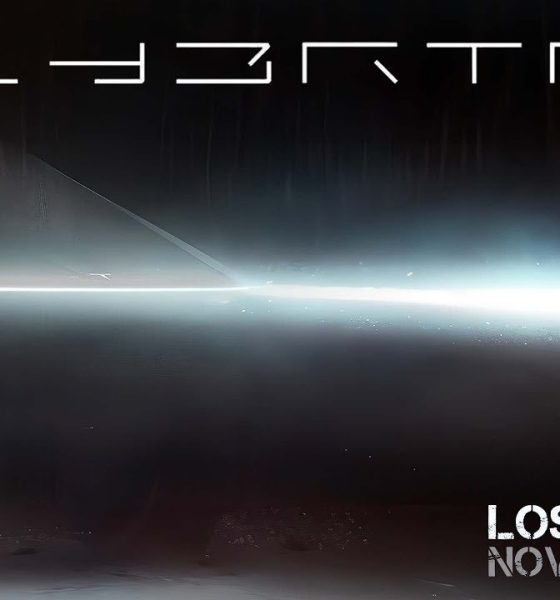

News
Tesla’s futuristic ‘Supertruck’ pickup is over seven years in the making
Ahead of Tesla’s Cybertruck unveiling later tonight, CEO Elon Musk went into the historical depths of his Twitter account and recovered a tidbit regarding his plans to create a “Supertruck” with exceptional performance standards.
In 2012, Musk shared one idea for a Supertruck that has “crazy torque, dynamic air suspension, and corners like it’s on rails.” The tweet was in response to Musk’s idea that the company’s flagship sedan, the Model S, would show people that “electric is way way better than gas.” Over seven years since posting that tweet on the social media platform, the vehicle referenced by Musk is about to be unveiled to the world.
There is much excitement budding around the release of the Tesla Cybertruck, especially considering Elon Musk’s previous statements about the vehicle. Over the past months, Musk has mentioned that the pickup is probably the best vehicle that Tesla has created to date. Tesla board member and Square Roots founder Kimbal Musk echoed this statement, noting on Twitter that he has not been this excited about a vehicle’s unveiling since the Model S back in 2012. The CEO has also mentioned that the vehicle will have better performance than a base Porsche 911, hinting at a 0-60 mph time of around 3 seconds.
@DJjodes Would love to make a Tesla supertruck with crazy torque, dynamic air suspension and corners like its on rails. That'd be sweet…
— Elon Musk (@elonmusk) August 1, 2012
While the truck’s look has been heavily speculated by electric vehicle enthusiasts, nobody truly knows what the pickup will look like. Musk has said the truck will be “pretty sci-fi…It’s kind of like a Blade Runner truck,” and he has also used the term “cyberpunk,” too. The specifications of the vehicle have been talked about by Musk in the past, with the CEO suggesting a 400-500 mile range, huge seats capable of fitting legendary professional wrestler Andre the Giant, and a towing capacity of 300,000-lbs.
The truck is expected to have a starting price of $49,000, as per Musk’s statements in an appearance at the Ride the Lightning Podcast. This price is significantly less than the $69,000 Rivian R1T pickup that will begin production in late-2020. It should be noted that the Cybertruck will likely not be directly competing against the R1T, but rather with premium petrol-powered trucks that have dominated the pickup industry.
The unveiling of Tesla’s new pickup was announced on November 6 by Musk. Coincidentally, the electric car maker also submitted a trademark for the words “CYBERTRUCK” and “CYBRTRK” on the same day. The unveiling event will take place near the SpaceX rocket factory in Los Angeles tonight at 8 PM PST.
Musk has always been very open about his plans for the future. His tweet in 2012 regarding the truck has finally come to fruition with the planned unveiling of the pickup later tonight. His vision for a truck that will become the industry standard is seven years in the making, but this is not the first time the Tesla CEO has been vocal about things that seem out of reach. In fact, Tesla’s Master Plan is an example of Musk’s dreams that seem crazy at the time of publishing, but he has come to accomplish many of the things he has set out to achieve. The Master Plan stated:
- Build sports car
- Use that money to build an affordable car
- Use that money to build an even more affordable car
- While doing above, also provide zero emission electric power generation options
Tonight, we will see the next big thing that Tesla will unveil to the world — another vehicle that will serve a role in Elon Musk’s Master Plan.

Elon Musk
Tesla AI Head says future FSD feature has already partially shipped

Tesla’s Head of AI, Ashok Elluswamy, says that something that was expected with version 14.3 of the company’s Full Self-Driving platform has already partially shipped with the current build of version 14.2.
Tesla and CEO Elon Musk have teased on several occasions that reasoning will be a big piece of future Full Self-Driving builds, helping bring forth the “sentient” narrative that the company has pushed for these more advanced FSD versions.
Back in October on the Q3 Earnings Call, Musk said:
“With reasoning, it’s literally going to think about which parking spot to pick. It’ll drop you off at the entrance of the store, then go find a parking spot. It’s going to spot empty spots much better than a human. It’s going to use reasoning to solve things.”
Musk said in the same month:
“By v14.3, your car will feel like it is sentient.”
Amazingly, Tesla Full Self-Driving v14.2.2.2, which is the most recent iteration released, is very close to this sentient feeling. However, there are more things that need to be improved, and logic appears to be in the future plans to help with decision-making in general, alongside other refinements and features.
On Thursday evening, Elluswamy revealed that some of the reasoning features have already been rolled out, confirming that it has been added to navigation route changes during construction, as well as with parking options.
He added that “more and more reasoning will ship in Q1.”
🚨 Tesla’s Ashok Elluswamy reveals Nav decisions when encountering construction and parking options contain “some elements of reasoning”
More uses of reasoning will be shipped later this quarter, a big tidbit of info as we wait v14.3 https://t.co/jty8llgsKM
— TESLARATI (@Teslarati) January 9, 2026
Interestingly, parking improvements were hinted at being added in the initial rollout of v14.2 several months ago. These had not rolled out to vehicles quite yet, as they were listed under the future improvements portion of the release notes, but it appears things have already started to make their way to cars in a limited fashion.
Tesla Full Self-Driving v14.2 – Full Review, the Good and the Bad
As reasoning is more involved in more of the Full Self-Driving suite, it is likely we will see cars make better decisions in terms of routing and navigation, which is a big complaint of many owners (including me).
Additionally, the operation as a whole should be smoother and more comfortable to owners, which is hard to believe considering how good it is already. Nevertheless, there are absolutely improvements that need to be made before Tesla can introduce completely unsupervised FSD.
Elon Musk
Tesla’s Elon Musk: 10 billion miles needed for safe Unsupervised FSD
As per the CEO, roughly 10 billion miles of training data are required due to reality’s “super long tail of complexity.”

Tesla CEO Elon Musk has provided an updated estimate for the training data needed to achieve truly safe unsupervised Full Self-Driving (FSD).
As per the CEO, roughly 10 billion miles of training data are required due to reality’s “super long tail of complexity.”
10 billion miles of training data
Musk comment came as a reply to Apple and Rivian alum Paul Beisel, who posted an analysis on X about the gap between tech demonstrations and real-world products. In his post, Beisel highlighted Tesla’s data-driven lead in autonomy, and he also argued that it would not be easy for rivals to become a legitimate competitor to FSD quickly.
“The notion that someone can ‘catch up’ to this problem primarily through simulation and limited on-road exposure strikes me as deeply naive. This is not a demo problem. It is a scale, data, and iteration problem— and Tesla is already far, far down that road while others are just getting started,” Beisel wrote.
Musk responded to Beisel’s post, stating that “Roughly 10 billion miles of training data is needed to achieve safe unsupervised self-driving. Reality has a super long tail of complexity.” This is quite interesting considering that in his Master Plan Part Deux, Elon Musk estimated that worldwide regulatory approval for autonomous driving would require around 6 billion miles.
FSD’s total training miles
As 2025 came to a close, Tesla community members observed that FSD was already nearing 7 billion miles driven, with over 2.5 billion miles being from inner city roads. The 7-billion-mile mark was passed just a few days later. This suggests that Tesla is likely the company today with the most training data for its autonomous driving program.
The difficulties of achieving autonomy were referenced by Elon Musk recently, when he commented on Nvidia’s Alpamayo program. As per Musk, “they will find that it’s easy to get to 99% and then super hard to solve the long tail of the distribution.” These sentiments were echoed by Tesla VP for AI software Ashok Elluswamy, who also noted on X that “the long tail is sooo long, that most people can’t grasp it.”
News
Tesla earns top honors at MotorTrend’s SDV Innovator Awards
MotorTrend’s SDV Awards were presented during CES 2026 in Las Vegas.

Tesla emerged as one of the most recognized automakers at MotorTrend’s 2026 Software-Defined Vehicle (SDV) Innovator Awards.
As could be seen in a press release from the publication, two key Tesla employees were honored for their work on AI, autonomy, and vehicle software. MotorTrend’s SDV Awards were presented during CES 2026 in Las Vegas.
Tesla leaders and engineers recognized
The fourth annual SDV Innovator Awards celebrate pioneers and experts who are pushing the automotive industry deeper into software-driven development. Among the most notable honorees for this year was Ashok Elluswamy, Tesla’s Vice President of AI Software, who received a Pioneer Award for his role in advancing artificial intelligence and autonomy across the company’s vehicle lineup.
Tesla also secured recognition in the Expert category, with Lawson Fulton, a staff Autopilot machine learning engineer, honored for his contributions to Tesla’s driver-assistance and autonomous systems.
Tesla’s software-first strategy
While automakers like General Motors, Ford, and Rivian also received recognition, Tesla’s multiple awards stood out given the company’s outsized role in popularizing software-defined vehicles over the past decade. From frequent OTA updates to its data-driven approach to autonomy, Tesla has consistently treated vehicles as evolving software platforms rather than static products.
This has made Tesla’s vehicles very unique in their respective sectors, as they are arguably the only cars that objectively get better over time. This is especially true for vehicles that are loaded with the company’s Full Self-Driving system, which are getting progressively more intelligent and autonomous over time. The majority of Tesla’s updates to its vehicles are free as well, which is very much appreciated by customers worldwide.








